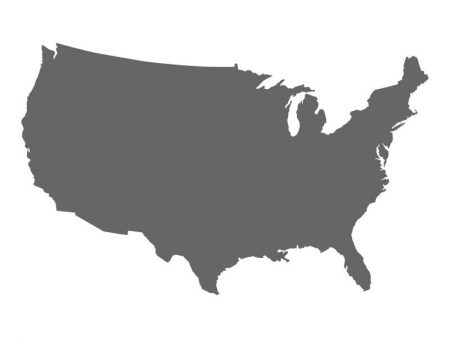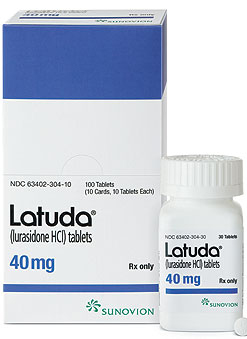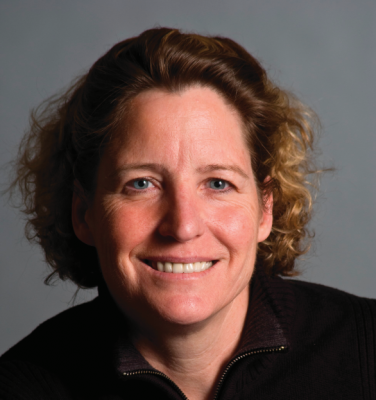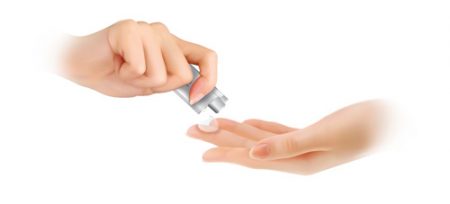Children Who Are Bullied Have Poorer Mental Health
A 2017 study of twins between the ages of 11 and 16 found that being bullied around age 11 caused anxiety, depression, hyperactivity and impulsivity, inattention, and conduct problems, some of which lasted for years. Participants recorded their experiences with physical or verbal bullying, social manipulation, and property attacks (trying to break one’s belongings, for example).
The effects of bullying decreased over time. The bullied children were still significantly more anxious than their non-bullied twins two years later, but this difference faded by the five-year mark. However, paranoid thoughts and cognitive disorganization did persist for 5 years.
The twin study design helped researchers zone in on the causal effect bullying might have on the children’s mental health, rather than other factors the twins shared, such as genetics or family environment. The study included 11,108 twins born in England and Wales.
The research by Timothy Singham and colleagues was published in the journal JAMA Psychiatry. Interestingly, the researchers found that prior mental health difficulties increased children’s likelihood of being bullied, such that being bullied could be considered a symptom of preexisting vulnerabilities. Singham and colleagues suggest that in addition to interventions to reduce bullying and address familial factors that might make children susceptible to bullying, children should also be taught resilience skills.
Cannabinoid Gel Treats Fragile X Syndrome
Fragile X syndrome is a genetic disorder characterized by developmental problems such as intellectual disabilities, cognitive impairment, and behavioral and learning challenges. Zynerba Pharmaceuticals announced in 2017 that a cannabinoid gel they have produced improved symptoms of fragile x syndrome in children and adolescents when applied daily to the upper arm.
Multiple cannabinoids are derived from cannabis plants, and include cannabidiol, which likely conveys some of the plant’s positive effects, and tetrahydrocannabinol (THC), which lends marijuana its psychoactive or psychomimetic effects, such as delusion or delirium. Cannabidiol is the active ingredient in the gel, and no THC was found in participants’ blood tests after using the gel.
The open study of 20 patients aged 6 to 17 years found that the participants showed improvement on a scale measuring anxiety, depression, and mood after 12 weeks of using the gel. The gel also appeared to improve aberrant behaviors including social avoidance, temper tantrums, repetitive movements, and hyperactivity. Treatment began at a dose of 50mg per day, and could be increased up to 250 mg per day within the first six weeks of the study. The dose then remained stable for the next six weeks.
Zynerba Pharmaceuticals hope to begin controlled clinical trials in 2018, with the goal of attaining approval for the drug from the US Food and Drug Administration. Other companies are also competing to garner the first FDA approval of a cannabis-based drug. Many of the drugs currently in development are intended to target neurological or behavioral conditions.
Pediatric Bipolar Disorder Diagnoses Much More Common in US than England
 A 2014 article by Anthony James and colleagues in the Journal of the American Academy of Child and Adolescent Psychiatry reported that hospitalizations for pediatric bipolar disorder are 72.1 times higher in the US than in England.
A 2014 article by Anthony James and colleagues in the Journal of the American Academy of Child and Adolescent Psychiatry reported that hospitalizations for pediatric bipolar disorder are 72.1 times higher in the US than in England.
The researchers determined that there were 100.9 diagnoses of pediatric bipolar disorder per 100,000 people in the US, but only 1.4 cases per 100,000 people in Britain. The discrepancy in diagnoses for adult bipolar disorder and for other childhood psychiatry illnesses were smaller but still notable: While 158.2 adults per 100,000 in the US were diagnosed with bipolar disorder, only 22.1 adults per 100,000 in England received such a diagnosis, making the diagnosis of bipolar disorder in adults 7.2 times more common in the US. Diagnoses of childhood attention-deficit hyperactivity disorder (ADHD) were 13.0 times more common in the US than in England, while cases of childhood depression were 4.2 times more common in the US.
James and colleagues hypothesized several potential reasons for the dramatic difference in diagnosis rates at hospital discharge of bipolar disorder in children in the US versus England. The lower hospitalization rates for pediatric bipolar disorder in England may reflect the better availability of community or outpatient treatment options there. Diagnostic practices may also differ. James and colleagues suggested that in the US, pediatric diagnoses of bipolar disorder are often used to describe children and adolescents with irritability and frequent mood shifts, whereas English diagnostic practices rely more on episodic bouts of euphoria to diagnose bipolar disorder in children.
However, children in the US may simply be more likely to have a variety of childhood psychiatric disorders than those from England.
Editor’s Note: Epidemiological data support the view that bipolar disorder not otherwise specified (BP-NOS), which is often the earliest manifestation of bipolar disorder, is indeed much more common in the US than multiple other countries.
Even if there are some diagnostic differences that contribute to the immense 72.1 fold higher rates of hospitalization for childhood bipolar in the US compared to Britain, one cannot overlook the findings that these children are requiring hospitalization for something resembling bipolar disorder and are in need of treatment. Read more
FDA Approves Lurasidone for Bipolar Depression in Children and Adolescents
 In March 2018, the US Food and Drug Administration approved the antipsychotic drug lurasidone (Latuda) for the treatment of bipolar depression in children and adolescents aged 10–17 years. Lurasidone was already approved for adults with bipolar depression, as an add-on treatment to the mood stabilizers lithium and valproate, and for schizophrenia in people aged 13 years and up.
In March 2018, the US Food and Drug Administration approved the antipsychotic drug lurasidone (Latuda) for the treatment of bipolar depression in children and adolescents aged 10–17 years. Lurasidone was already approved for adults with bipolar depression, as an add-on treatment to the mood stabilizers lithium and valproate, and for schizophrenia in people aged 13 years and up.
A 6-week clinical trial in 347 youth compared lurasidone (in doses ranging from 20 to 80 mg/day) to placebo and found that those who received lurasidone showed significant improvements in depression compared to those who received placebo. The average dose was below 40 mg/day. The research by Melissa P. DelBello and colleagues was published in the Journal of the American Academy of Child and Adolescent Psychiatry in 2017.
In the study, lurasidone was well-tolerated. Side effects included nausea, sleepiness, minimal weight gain, and insomnia. Lurasidone did not seem to affect glucose, triglycerides, cholesterol, or blood pressure.
Editor’s Note: This is the first drug to be approved for bipolar depression in this age range. This editor (Robert M. Post) has written extensively on the high incidence of childhood onset bipolar disorder in the US, and especially in the offspring of parents with bipolar disorder.
It is important to be alert to the possibilities of depression and bipolar disorder in children in the US (along with related illnesses such as anxiety, oppositional defiant disorder, and attention deficit hyperactivity disorder (ADHD)), as early-onset illness tends to have a more severe long-term course than adult-onset depression and bipolar disorder. A longer delay between the emergence of symptoms and the first treatment for bipolar disorder is also a risk factor for more severe depression, more time depressed, and a poorer outcome in adulthood.
Parents of children aged 2-12 who have mood or behavioral problems are encouraged to consider joining the Child Network at our website, bipolarnews.org (click on the tab for the Child Network). By participating in this research network, parents are able to make a weekly rating of the severity of their children’s symptoms of anxiety, depression, ADHD, oppositional behavior, and mania via the secure website. The ratings can then be shared with the child’s clinicians for easy visualization of the course of symptoms over time, which may help with treatment decisions.
Clinical Vignettes from Dr. Elizabeth Stuller
 Dr. Elizabeth Stuller, a staff psychiatrist at the Amen clinics in Washington, DC and CEO of private practice Stuller Resettings in Baltimore, MD, provided this editor (Robert M. Post) with several interesting anecdotal observations based on her wide clinical experience with difficult-to-treat mood disordered patients.
Dr. Elizabeth Stuller, a staff psychiatrist at the Amen clinics in Washington, DC and CEO of private practice Stuller Resettings in Baltimore, MD, provided this editor (Robert M. Post) with several interesting anecdotal observations based on her wide clinical experience with difficult-to-treat mood disordered patients.
- Stuller has used low-dose asenapine (Saphris), e.g. half a pill placed under the tongue, for depressed patients with alcohol use problems who have trouble getting to sleep. She has also used asenapine for rapid calming of agitated patients in her office.
- Stuller has also had success with the use of the atypical antipsychotic drug brexpiprazole (Rexulti) for patients with bipolar depression and low energy. She typically uses 0.5 mg/day for women and 1 mg/day for men. Stuller finds that there is little weight gain or akathisia with brexpiprazole.
- She has had success with the drug Nuedexta, which is a combination of dextromethorphan and quinidine and is approved for the treatment of sudden uncontrollable bouts of laughing or crying, known as pseudobulbar affect, which can occur as a result of neurological conditions or brain injuries. It is a combination of an NMDA antagonist and a sigma receptor agonist. Stuller starts with the 20mg dextromethorphan/10 mg quinidine dose once a day and increases to twice a day in week two. She finds it useful for behavioral effects of traumatic brain injury (TBI), anxiety resulting from the use of synthetic marijuana (sometimes called spice), and psychosis not otherwise specified. Stuller also finds that some patients appear to respond well to Nuedextra but not minocycline, or vice versa.
Editor’s Note: Note that these are preliminary clinical anecdotes conveyed in a personal communication, and have not been studied in clinical trials, thus should not be relied upon in the making of medical decisions. All decisions about treatment are the responsibility of a treating physician.



